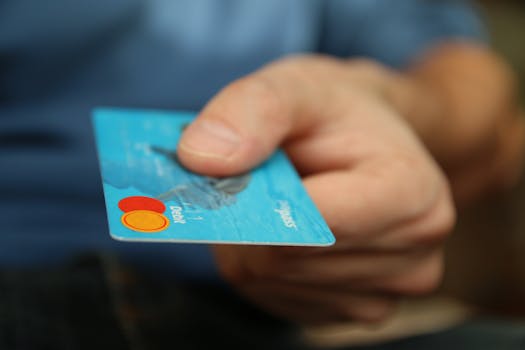One of the most underestimated challenges of moving to a new country is starting over financially. You may have years of spotless credit, stable income, and reliable banking relationships in your home country—but when you immigrate, it often feels like you’re starting from scratch.
This guide will help you understand how to set up your finances abroad, open a bank account, transfer or rebuild your credit history, and manage your money confidently as a new resident. Whether you’ve moved to the United States, Canada, or Europe, these steps apply globally with some country-specific adjustments.
1. Open a Local Bank Account
Your first priority is getting access to a local checking (current) account. This will allow you to receive income, pay bills, and begin building local financial history.
What you typically need:
- Valid passport or national ID
- Proof of immigration status (visa, residence permit)
- Proof of address (rental contract, utility bill, or lease letter)
- Local tax identification number (where applicable)
Popular banks for newcomers:
- USA: Chase, Bank of America, Wells Fargo, and local credit unions
- Canada: RBC, TD, Scotiabank (many offer newcomer packages)
- UK: Barclays, Lloyds, Monzo (online banks may have fewer requirements)
- Germany: Deutsche Bank, N26, Sparkasse (N26 is fully digital and immigrant-friendly)
Tips:
- Choose a bank with strong online/mobile access
- Ask about international wire fees and multi-currency options
- See if the bank has a global affiliate in your home country for easier transfers
2. Understand Local Currency, Banking Hours, and Payment Culture
Each country has unique financial behaviors. For example:
- Germany and Japan still rely heavily on cash in many areas
- USA prefers debit/credit card payments almost everywhere
- Scandinavian countries use mobile apps like Swish or Vipps
Learn:
- Bank opening hours (they’re often shorter in Europe)
- Which apps are used for peer-to-peer transfers (e.g., Zelle, Venmo, Revolut)
- Whether you need a chequebook (often obsolete in newer systems)
3. Start Building or Transferring Credit History
Most countries don’t recognize foreign credit histories, but some offer ways to transfer or rebuild:
Transferring Credit History
- USA: American Express Global Transfer lets eligible cardholders open a new card based on their home country history
- UK and Australia: Some international banks like HSBC or Barclays offer “credit starter” programs for existing clients
Building from Scratch
- Open a secured credit card (backed by a cash deposit)
- Apply for a mobile phone contract or utilities in your name
- Use credit-builder apps or services (e.g., Self, Experian Boost in the U.S.)
- Pay bills on time and keep credit utilization below 30%
Credit Bureaus to Know
- USA: Experian, Equifax, TransUnion
- Canada: Equifax, TransUnion
- UK: Experian, Equifax, TransUnion
- Germany: SCHUFA
4. Learn the Tax System and Reporting Requirements
Immigrants are often surprised to learn they may owe taxes in more than one country, especially if they maintain income or assets abroad.
- Apply for a local tax ID (e.g., Social Security Number in the U.S., SIN in Canada, NIF in Portugal)
- Understand residency thresholds for taxation
- If self-employed or freelance, register with the local tax authority
- Explore double taxation treaties between your old and new country
- Consider working with a tax advisor for your first year
5. Protect Your Money and Identity
Newcomers are often targets of financial scams and identity theft.
- Use strong, unique passwords for all financial accounts
- Set up 2FA (two-factor authentication)
- Avoid sharing sensitive documents via unencrypted email
- Monitor your bank and credit reports regularly
In the U.S. and Canada, you can request a free credit report once per year to monitor your activity and correct errors.
6. Send and Receive International Funds Wisely
If you’re supporting family back home or transferring assets, you’ll want to minimize fees and delays.
Top options for international transfers:
- Wise (formerly TransferWise): Transparent rates, good for large sums
- Revolut: Great for travelers and small transfers
- Western Union or MoneyGram: Better for cash pickup, not ideal for fees
- Bank wire transfers: Reliable but often expensive
Tips:
- Compare rates and fees across platforms
- Double-check recipient information
- Avoid transferring large sums without understanding tax implications
7. Build a Monthly Budget and Track Spending
The cost of living may be dramatically different from your home country. Budgeting helps you stay in control.
- Use apps like Mint (U.S./Canada), YNAB, or Emma (UK)
- Track fixed expenses (rent, insurance, transit) vs. variable ones (groceries, entertainment)
- Don’t forget to factor in one-time costs like furniture, immigration fees, or winter clothing
8. Understand Insurance and Emergency Funds
Most newcomers underestimate the importance of local insurance and savings buffers.
- Get renter’s insurance if you’re leasing
- Ask about local deposit insurance (e.g., FDIC in the U.S., CDIC in Canada)
- Aim to save 1–3 months of expenses as an emergency fund
- Consider life or health insurance if you have dependents
Financial security takes time—but you can accelerate your stability by being proactive, asking the right questions, and learning how local systems work. Many countries now offer newcomer support programs through banks, nonprofit agencies, and immigration centers.
With the right setup, your financial life abroad can be just as strong—or stronger—than what you left behind. Take one step at a time, build smart habits early, and don’t hesitate to ask for guidance along the way.


